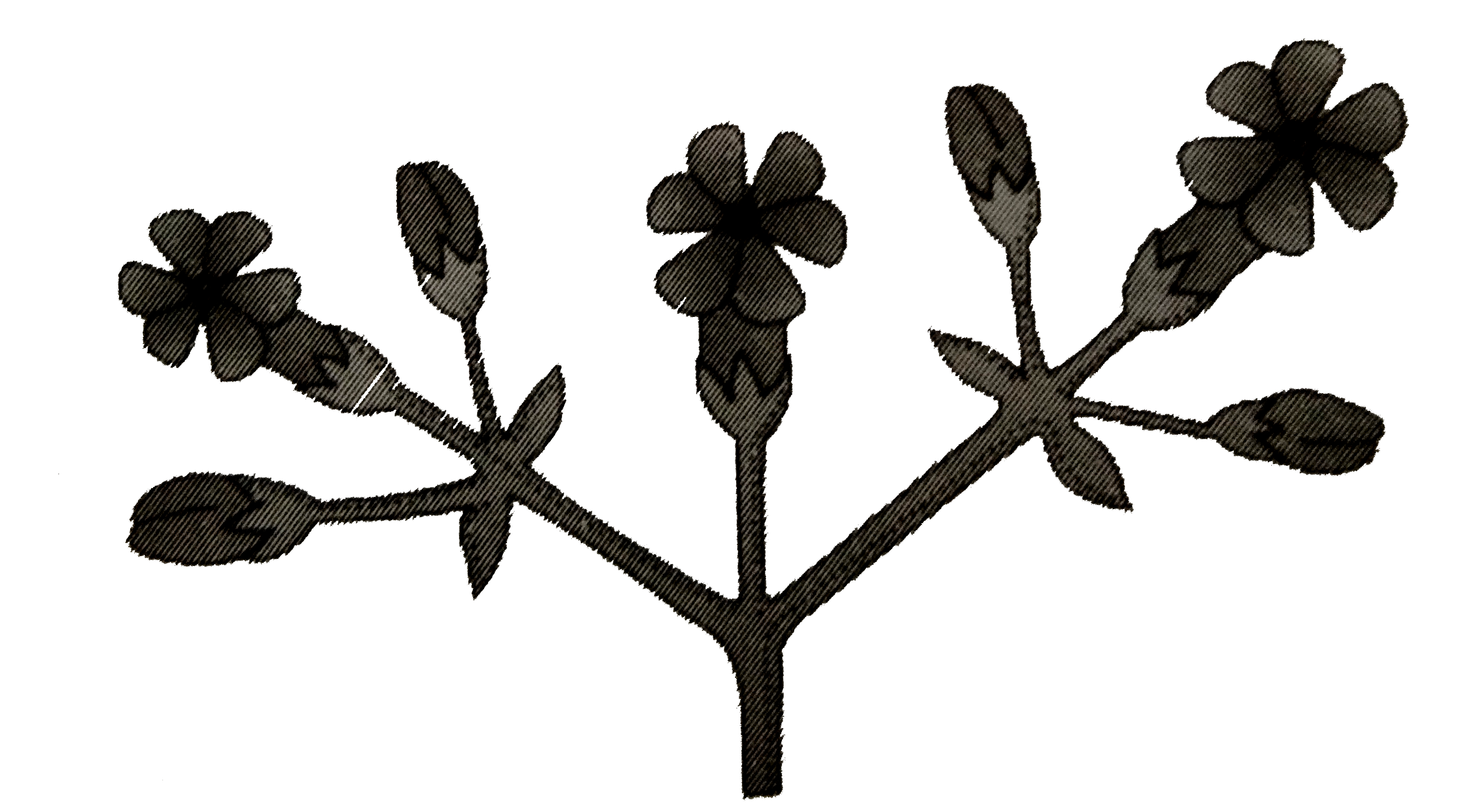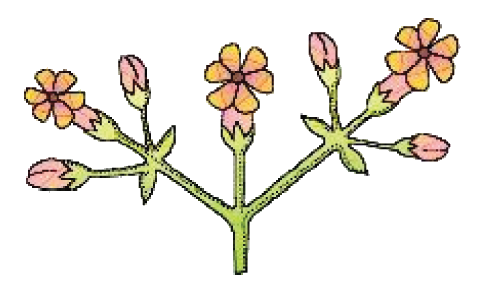The type of inflorescence characterized by having dimorphic flower is
Catkin
Umbel
Corymb
Capitulum
The correct Answer is:D
To solve the question about the type of inflorescence characterized by having dimorphic flowers, we can follow these steps:
1. Understand the Question: The question asks for a type of inflorescence that has dimorphic flowers. Dimorphic flowers refer to flowers that come in two different forms.
2. Identify the Options: The options provided are:
- A) Catkin
- B) Umbel
- C) Spike
- D) Capitulum
3. Analyze Each Option:
- Catkin: This type of inflorescence has an elongated axis and typically bears unisexual flowers. Since it does not have dimorphic flowers, this option is incorrect.
- Umbel: An umbel has a shortened axis and also typically bears unisexual flowers. Therefore, this option is also incorrect.
- Spike: Similar to the catkin, a spike has a shortened axis and bears unisexual flowers, making this option incorrect as well.
- Capitulum: This type of inflorescence has a flattened axis and is characterized by having sessile flowers arranged on a flat surface. It can have flowers of different forms, thus fitting the definition of dimorphic flowers.
4. Conclusion: Based on the analysis, the correct answer is Capitulum as it is the type of inflorescence characterized by having dimorphic flowers.
Final Answer:
The type of inflorescence characterized by having dimorphic flowers is Capitulum.
---
- A) Catkin
- B) Umbel
- C) Spike
- D) Capitulum
- Catkin: This type of inflorescence has an elongated axis and typically bears unisexual flowers. Since it does not have dimorphic flowers, this option is incorrect.
- Umbel: An umbel has a shortened axis and also typically bears unisexual flowers. Therefore, this option is also incorrect.
- Spike: Similar to the catkin, a spike has a shortened axis and bears unisexual flowers, making this option incorrect as well.
- Capitulum: This type of inflorescence has a flattened axis and is characterized by having sessile flowers arranged on a flat surface. It can have flowers of different forms, thus fitting the definition of dimorphic flowers.
The type of inflorescence characterized by having dimorphic flowers is Capitulum.
Topper's Solved these Questions
- MORPHOLOGY OF FLOWERING PLANTSBOOK - AAKASH INSTITUTE ENGLISHCHAPTER - MORPHOLOGY OF FLOWERING PLANTSEXERCISE - SECTION-C OBJECTIVE TYPE QUESTIONS
105 Videos
- MORPHOLOGY OF FLOWERING PLANTSBOOK - AAKASH INSTITUTE ENGLISHCHAPTER - MORPHOLOGY OF FLOWERING PLANTSEXERCISE - SECTION-D ASSERTION-REASON TYPE QUESTIONS
10 Videos
- MORPHOLOGY OF FLOWERING PLANTSBOOK - AAKASH INSTITUTE ENGLISHCHAPTER - MORPHOLOGY OF FLOWERING PLANTSEXERCISE - ASSIGEMENT SECTION-A OBJECTIVE TYPE QUESTIONS
50 Videos
- MOLECULAR BASIS OF INHERITANCE BOOK - AAKASH INSTITUTE ENGLISHCHAPTER - MOLECULAR BASIS OF INHERITANCE EXERCISE - ASSIGNMENT (SECTION -D) (Assertion -Reason Type Questions)
20 Videos
- NEURAL CONTROL AND COORDINATION BOOK - AAKASH INSTITUTE ENGLISHCHAPTER - NEURAL CONTROL AND COORDINATION EXERCISE - Assignment SECTION - D (Assertion-Reason Type Questions )
10 Videos
Similar Questions
Knowledge Check
The type of inflorescence which is not racemose but resembles a single flower is called :
AcapitulumBcyathiumCverticillasterDmultiparous cymeWhat type of inflorescence does the given figure show ?
 AUniparous cymeBBiparous cymeCMultiparousDRacemose
AUniparous cymeBBiparous cymeCMultiparousDRacemose
Cyathium inflorescence is characterised by
A)Single female flower surrounded by many male flowers
B) Involucre of bracts enclosing all the flower
C) Fleshy inflorescence axis with a pear shaped cavity inside
D) Chlamydeous flowers
View SolutionIn (i) ––––––––––– type of inflorescence, main axis terminates in a flower, hence is limited in growth and flowers are borne in (ii)–––––––– Succession.
View SolutionThe most advanced type of inflorescence is
View SolutionWhich type of inflorescence is shown below?

View SolutionThe type of inflorescence wherein the main axis has limited growth and ends in a flower is termed
View SolutionIn which type of inflorescence the flowers are borne in a basipetal order
View Solution
